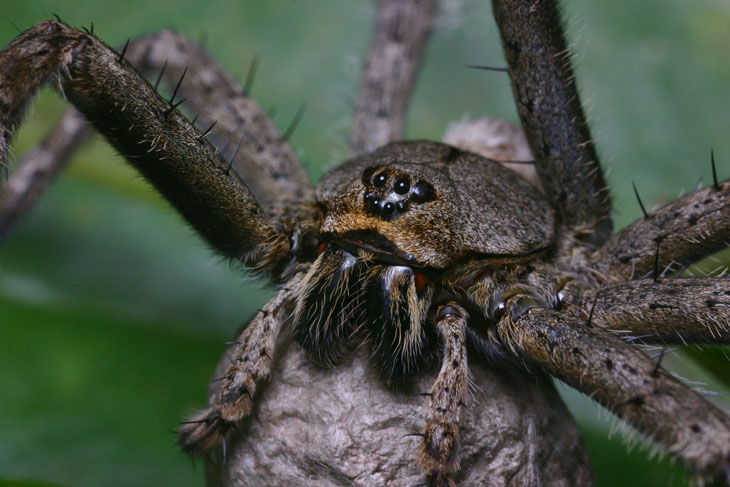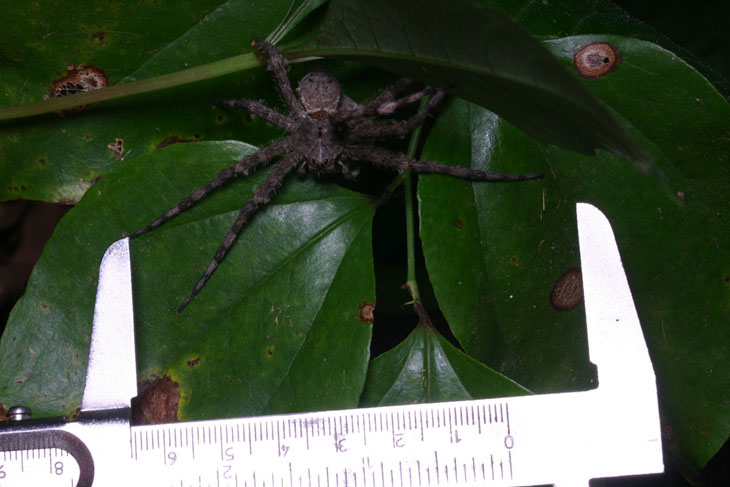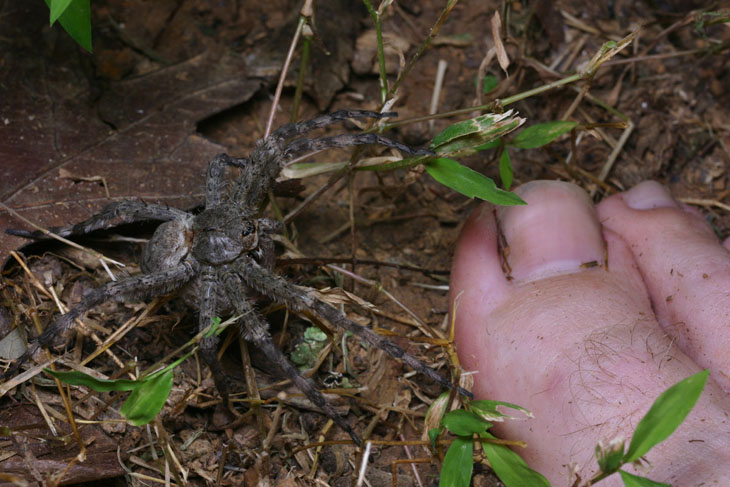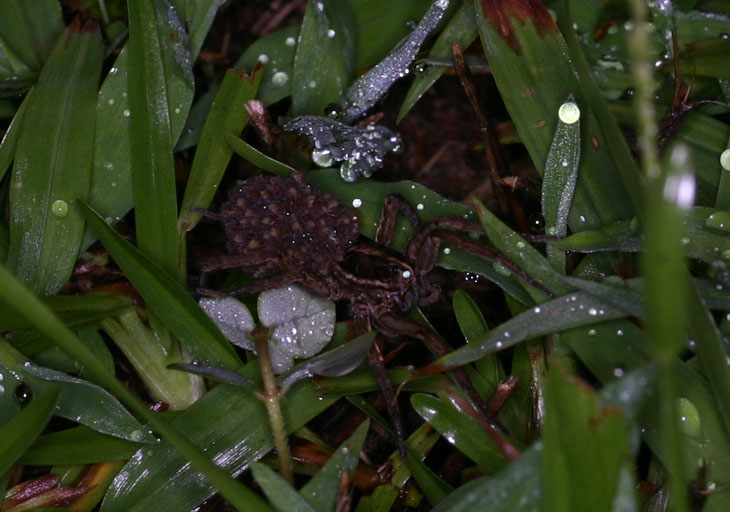 When this book was first published, I was 10 years old, in that directionless, awkward stage between playing Bionic Man and shooting Stormtroopers with my blaster, so if you want to consider this review ill-timed that’s fine with me. There is likely nothing I say here that hasn’t been said before, but that’s probably true of the entire blog anyway. I also need to note that the version I have reviewed is the 1989 reprint containing significant addenda to the original from 1976; there is now a 30th anniversary edition that may have further edited/corrected information different from the review here.
When this book was first published, I was 10 years old, in that directionless, awkward stage between playing Bionic Man and shooting Stormtroopers with my blaster, so if you want to consider this review ill-timed that’s fine with me. There is likely nothing I say here that hasn’t been said before, but that’s probably true of the entire blog anyway. I also need to note that the version I have reviewed is the 1989 reprint containing significant addenda to the original from 1976; there is now a 30th anniversary edition that may have further edited/corrected information different from the review here.
Richard Dawkins’ The Selfish Gene is, in several ways, a notorious book. Among the most prominent is how so many people have taken this to imply that there is a gene which promotes selfishness – this might actually be true (there may be a lot of genes that produce such an effect,) but not at all what the title is intended to mean, and the book is undeserving of the antisocial stigma it has received. It is also the book that introduced the concept of the meme, most especially as an evolving ‘organism’ in itself, and this is an intriguing idea. Most of what it covers, though, is a particular perspective on natural selection that, in the end, produces a bit of irony.
The main premise of the book is that biological evolution (as opposed to that of language or vehicle design) does not take place at the level of the individual organism as is usually portrayed, but at the level of the gene, defined for clarity as a portion of DNA that produces a specific effect – brown eyes, for instance, or a strong bond with a sibling. While it is the organism that survives and reproduces, it does so at the bidding of a huge collection of genes, many of which have some impact on how effectively the organism survives or reproduces. The “selfish” bit arises with the perspective that the gene itself may be competing against others to replicate, and the overall organism is involved only because it’s the primary way that genes can replicate, whether it’s a complicated multicellular organism like humans or just a bacterium. The propagation of the organism is the propagation of every gene it carries, and these change frequently.
Now, it’s easy to consider this almost semantics; the genes collectively produce a particular phenotype (body plan, if you will) and it is this phenotype that produces the interactions that allow survival and reproduction. So is it the gene that survives, or the organism? Take your pick – as long as you understand that the gene is the point of variability for any organism, the distinction matters little. But this highlights a peculiar aspect of this book that I felt grossly detracts from the understanding of the whole process, and that is Dawkins’ frequent reliance on personifying language throughout, even displayed in the title.
Evolution by natural selection is a simple algorithm: any gene that increases the chances of an organism surviving and reproducing stands a greater chance of replicating than a gene that does not, and this is of course a scale – not a yes/no situation, but a good/better one. It’s also a tendency, subject to variations that average out rather than some kind of firm rule – there is nothing that says an organism will always reproduce, given a certain gene, only that chances may be improved. The gene, just a collection of molecules that trigger certain effects during cell division, is not trying to do anything and has no desire or goal to replicate – it just happens, and happens more when conditions favor it, so such a gene becomes more prevalent among a population of organisms. It is a strictly physical thing, like water running downhill and forming a trickle, then a stream, over the molecules’ tendency to form weak bonds with one another and gather in the large groups we call “drops” and “rivers.”
Throughout the book, however, Dawkins’ uses the language of what the gene wants, or that it is trying to survive – and that it can even be called “selfish.” From time to time he corrects the impression, clearly using it for illustrative purposes, but I found this to be a huge disservice to the whole idea of natural selection. Moreover, I did not find that it clarified things in the slightest, and could easily cause the reader to forget that there is no genetic goal, simply the path of greatest replication. Analogies are unavoidable when trying to explain the process, but some give a realistic impression, while others can cause great misunderstandings or outright confusion. Not to mention providing a grab-bag of quote-mining material for those who have an agenda to discredit evolution, something that Dawkins, of all people, should be aware of.
While this aspect of the book was far too prevalent, I don’t want it to detract from the rest, which is a solid and insightful examination of the process of selection. It’s easy to think that evolution is a binary live/die gamble, or even a reproduce/fail one, but there are numerous tiny divisions within, such as the efficiency in which an organism may operate – one that reproduces using less resources may spend less time foraging and thus have more time to reproduce, or one that avoids predators without taking the time to hide (camouflage) can gather more food. Thus the gene’s influence might be minuscule, but tiny improvements are better than none at all. Dawkins also examines what he calls the extended phenotype, or consider it the external phenotype if it helps: the ways in which an organism affects its environment or interacts with others. One of his examples is the caddisfly, which doesn’t grow a protective shell like many other species, but has the instinct to collect material and glue it together into an armored house. The glue produced, and the effort necessary, likely takes less resources than growing a shell would, especially if the species does not get sufficient calcium in its diet to extrude such a structure. The same may be said for hermit crabs, which take advantage of unused shells produced by other organisms and obtain significant protection from a simple behavioral trait and slightly specialized abdomens. Then there are the fascinating examples of symbiosis – two organisms operating to mutual benefit, such as large fish and various cleaner shrimp. The fish get rid of parasites by tolerating the attention of the shrimp, and the shrimp avoid being eaten by both those that they are cleaning and any smaller fish that wouldn’t venture within range of the larger. The key point within is that neither species plans this set of affairs, or even thinks about it – it came about because, of all the variations in behavior that may have ever popped up due to a gene’s affect on a developing brain, this one worked better.
Game theory wasn’t a well-known field of study when Dawkins added the chapter that examined one particular concept at length, usually called the “Prisoners’ Dilemma” (which I don’t want to write out here, so please use that link if you’re not familiar with it.) The idea is that a variation of the game could be applied towards evolution in selecting genes that produce behavioral traits – essentially, it is possible to model how natural selection will guide organisms towards social behavior, or parasitism, and so on. Despite the length of this section, however, there were three distinct things that I found missing. The first was that the ‘payoff’ always remained the same, never experimenting with, for instance, a much higher payoff for ‘selfish’ behavior, while it seems obvious that environmental variables would on occasion produce this. The second was that Dawkins never really translated the factors of the game into the actual process of selection – how would a gene ‘decide’ to be ‘selfish,’ and this reiterates the problem of analogies with intention. Moreover, the gene is not the thing that produces the variable, it is the variable, the ‘choice’ already made. To be more specific, the gene may duplicate faithfully, duplicate with an error, or be altered when combined with others during sexual reproduction – the resulting gene is the variable that may be selected for or against.
The third thing I found missing was that genes generally produce, not a behavior or overall ‘personality’ of the organism, but a response to a specific trigger – to use one of Dawkins’ examples, the urge for a parent bird to stuff food into a gaping mouth, and not always of its own progeny. This behavior being unspecific left an opening for a linked behavior in cuckoos, that of laying its eggs in the nests of other birds. The cuckoo is freed from child-rearing, the other bird is incapable of recognizing or resisting the usurper. It seems likely that a gene may arise among the other birds (individually among species of course,) allowing them to recognize interlopers, and thus their efforts will be put towards raising their own young – this gene could spread very rapidly, while the cuckoo might even go extinct. As I am fond of pointing out here, we humans also have specific behaviors with triggers, such as finding kittens cute. This does nothing whatsoever for our survival, but might be a niche that domestic cats have fallen into, finding an unspecific trait of ours that favors babies (of any species) and increasing their own survival and reproduction in the process. We can also be both selfish and cooperative; such traits are not overriding personalities, but responses to conditions – often in ways that don’t provide any distinct benefit. It doesn’t have to work to our benefit all of the time, just enough of the time to beat out the other gene variants that pop up in our population.
One of the few useful aspects of philosophy, as far as I’m concerned, is in the application of new perspectives and approaches to established (or even assumed) ideas, and Dawkins demonstrates that he’s a adherent of this aspect. Aside from the main concept of the book, and the ‘extended phenotype’ that he devoted another book to, Dawkins introduces (in a chapter added in 1989) the meme here. A meme is a coherent idea: a current fad, or George Washington’s ability to tell a lie, or indeed, captioning cat photos with inept phonetic grammar. What he proposes is that memes display a form of evolution in themselves, able to replicate throughout a culture and changing as they do so. Some die out quickly, some last for a long time; some change form drastically over the period of their ‘lives,’ and some remain almost entirely the same. Obviously, the ones that last have something that makes us want to repeat them, and so fit into a particular niche in the environment of our culture.
It’s an interesting analogy, but it remains only an analogy; memes are not an organism, even an abstract one, and have few if any properties in common. Here Dawkins’ reliance on language of intent and desire works to support the meme concept (and yes, “meme” is a meme itself, one that has evolved in a curious direction,) but consideration from a different perspective causes it all to fall flat. As I examined in another post, we are a species that forms coherent ideas about things, not just observing the world around us but extrapolating into properties, effects, and consequences; it is the very nature of what we consider abstract thought. And we’re not the only species to do so, as numerous experiments demonstrate, so the best we can say is that we possess this trait to a higher degree than we have been able to find in any other organism. Thus, memes are simply artifacts of our thinking processes, the ability to see (or create) patterns and, more importantly, the internal mechanism that makes us consider them important – sometimes they are, enough to make the trait useful, but not always. The survival of the “Obama is a muslim” meme doesn’t make it function in any way, it merely demonstrates that enough people want something to validate their petty prejudices, or are influenced by repetition, a side-effect of our social tendencies – “if this many others believe it, then I should too.” Memes might tell us something about how we conceive of them, or their evolution might present some insight into what we find appealing, but then again, it’s not like this is a new avenue of research. At best, they are a demonstration of how easy it is for our brains to latch onto inconsequential concepts.
One of the more interesting perspectives introduced, in another added chapter, was that of the biological bottleneck. Species that reproduce through a single cell (which is most of them, the zygote that undergoes cell division into a fully-developed offspring) are what translates the selfish gene into the optimized organism. If, for instance, an organism reproduced by dividing every one of its cells just once, in effect producing a clone of itself, no cell is necessarily related or linked to any other – any gene reproduction error (which is the key to genetic diversity) doesn’t replicate through the organism, and the cell becomes the hinge point of evolution. The reach of the gene is much shorter, the effect exponentially smaller. Speciation, however, would likely be far more diverse, if much slower. The “one copy” bottleneck means the genes must work in an environment of all others, and very likely produced the complex organisms we see all around us. Individual cell evolution is indeed visible, in the plethora of microbes that inhabit the planet, but these compete far more than they cooperate, and cohesiveness is nonexistent. It also serves to define the difference between ‘organism,’ where the affect of one gene can influence all others, and ‘environment,’ where individualism is the norm.
For someone unfamiliar with either evolution or genetics and wanting to remedy this, The Selfish Gene is not the choice to make. The book instead assumes a certain familiarity with at least the basics to introduce some new perspectives and details, and for those with prior knowledge, it provides some nicely detailed research, insights, and plenty of thought-provoking material. The deliberate language therein, as mentioned above, requires the constant mental reminder of it being illustrative, and translation into the actual selective process, something that the book could likely have done without. In addition, Dawkins is meticulous in many ways, and in establishing support for any aspect therein the writing can get slightly heavy – it is not a quick read, but a considered one, allowing time to absorb various details. In comparison to The God Delusion, this one doesn’t quite drive the title concept home as distinctly. It remains quite an interesting read, but doesn’t tie itself into a coherent whole as well as it might have.
In the opening of this review, I mentioned something about irony. Dawkins addressed the book towards a particular idea: that the previous concepts of the organism as the ‘currency’ of evolution was a mistaken assumption, and it was the gene that formed the real variable. Moreover, the gene could only ‘consider’ its own survival, and this singular, tiny point of selection provided everything that we see from living organisms. Yet, most genes survive only in the context of others, and reproduce only in the context of the organism, and rely themselves on the energy exchanges of biochemistry; the selfish gene perspective is a selective one in itself, requiring even the idea that a gene possesses any attitude. Like the gene that makes a cuckoo exploit the tendency in birds to feed any gaping mouth, they exist and survive only due to environmental factors; if birds were able/willing to differentiate their own young from interlopers, the gene to lay eggs in others’ nests would have died out immediately. In attempting to correct an assumption, Dawkins introduced one that stands correction itself. However, the book covers much more ground than its title premise, and saves itself because of that.
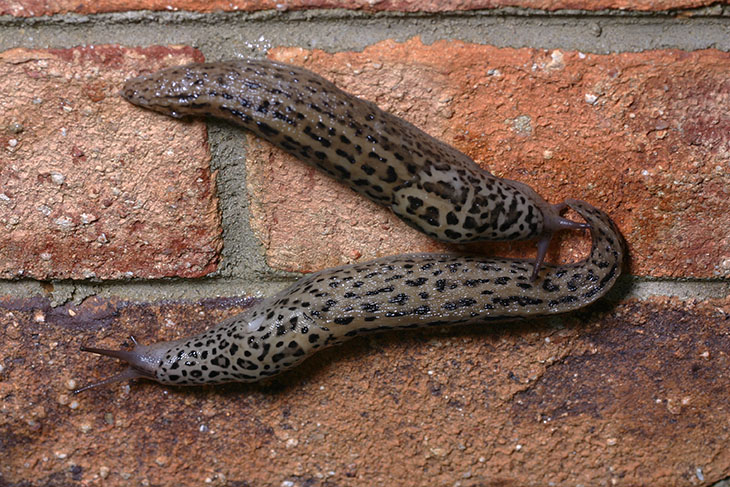
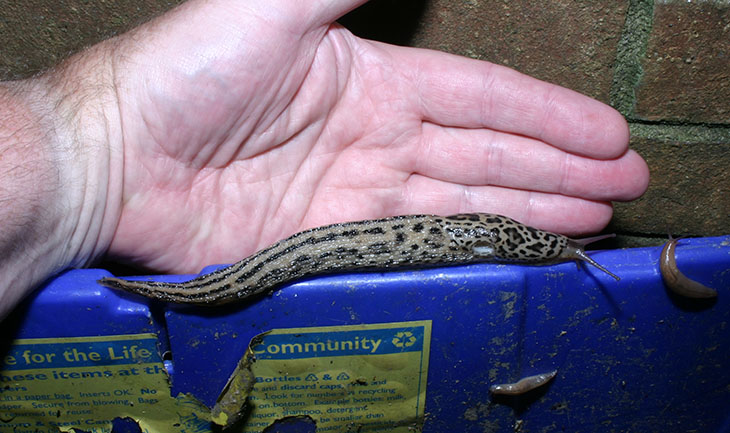
 Slug anatomy is a very peculiar thing, and serves as a reminder that so many animals that we know of are strikingly similar, because gastropods radically depart from these patterns. In between vomiting, you may have noticed a large opening in the side of the slug in the above image, and a close-up of this opening is shown at right. This is a pneumostome, and how slugs and snails breathe. All it does is open wide and draw air into a large interior space that’s heavily vascularized, and oxygen is absorbed into the system therein. It is only on the right, and cycles open and closed quite slowly, which comes as a surprise I’m sure.
Slug anatomy is a very peculiar thing, and serves as a reminder that so many animals that we know of are strikingly similar, because gastropods radically depart from these patterns. In between vomiting, you may have noticed a large opening in the side of the slug in the above image, and a close-up of this opening is shown at right. This is a pneumostome, and how slugs and snails breathe. All it does is open wide and draw air into a large interior space that’s heavily vascularized, and oxygen is absorbed into the system therein. It is only on the right, and cycles open and closed quite slowly, which comes as a surprise I’m sure.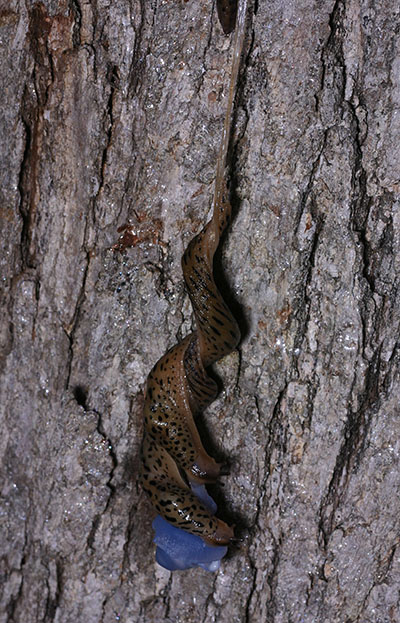 Up to this point, the only description I’d had of the curious sex life of gastropods came from the naturalist Gerald Durrell, having witnessed it as a boy growing up in Greece. Most, if not all species of slugs and snails are hermaphroditic, possessing both male and female sex organs – but no, they cannot go fuck themselves (someone had to say it.) The species Durrell witnessed actually entwined with the assistance of a bizarre mechanism that fired little darts from each snail, attached to a line of some kind, and they would harpoon one another and reel in mutually. This, (un)fortunately, is not the case with the leopard slug, which may go by many different names but is best identified with the scientific name Limax maximus. First off, they routinely do what the more adventurous of our species attempts (usually to comical results) and bump uglies while dangling from a harness of their own design, visible at top. The purpose of this, other than the obvious spice it adds, I can only speculate on, but I’m guessing it improves mobility. On first sighting, since it’s darker than the normal mucus, I wondered if it might actually have been part of the slugs’ anatomy, stretched to an absurd degree, but since it was left behind I determined it was just a slime rope.
Up to this point, the only description I’d had of the curious sex life of gastropods came from the naturalist Gerald Durrell, having witnessed it as a boy growing up in Greece. Most, if not all species of slugs and snails are hermaphroditic, possessing both male and female sex organs – but no, they cannot go fuck themselves (someone had to say it.) The species Durrell witnessed actually entwined with the assistance of a bizarre mechanism that fired little darts from each snail, attached to a line of some kind, and they would harpoon one another and reel in mutually. This, (un)fortunately, is not the case with the leopard slug, which may go by many different names but is best identified with the scientific name Limax maximus. First off, they routinely do what the more adventurous of our species attempts (usually to comical results) and bump uglies while dangling from a harness of their own design, visible at top. The purpose of this, other than the obvious spice it adds, I can only speculate on, but I’m guessing it improves mobility. On first sighting, since it’s darker than the normal mucus, I wondered if it might actually have been part of the slugs’ anatomy, stretched to an absurd degree, but since it was left behind I determined it was just a slime rope.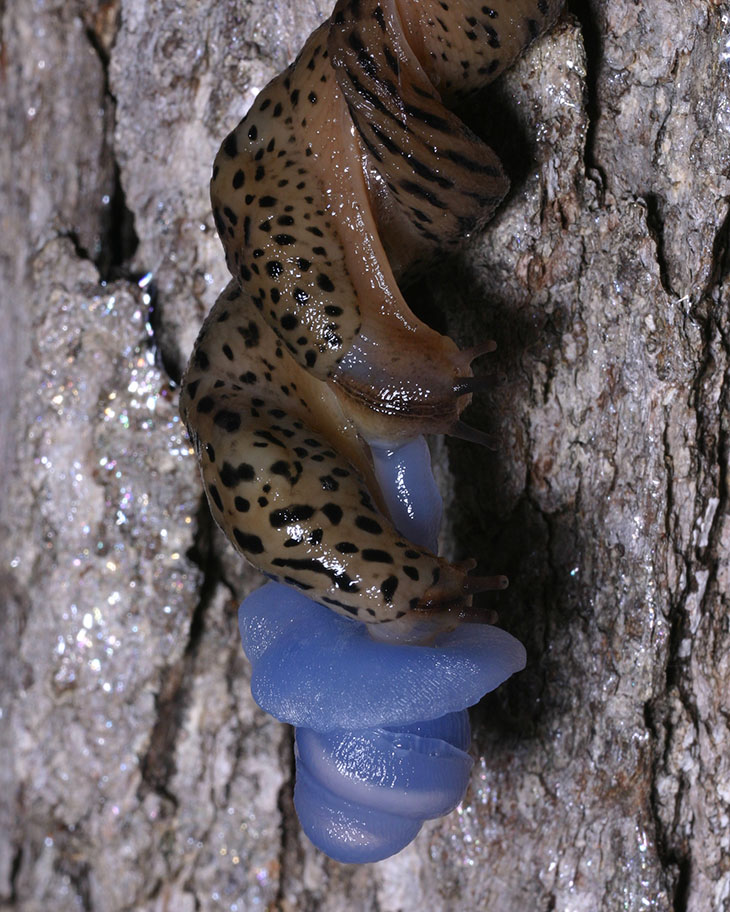
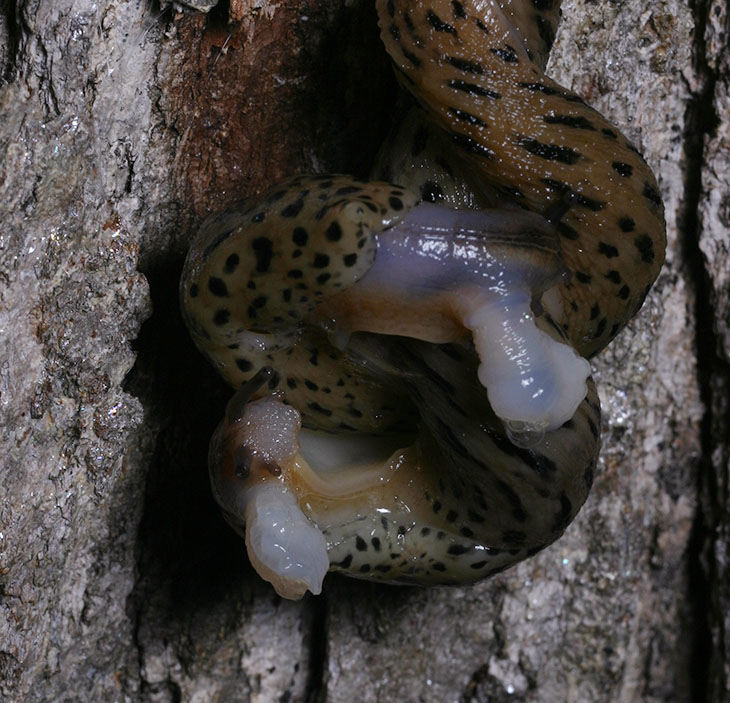
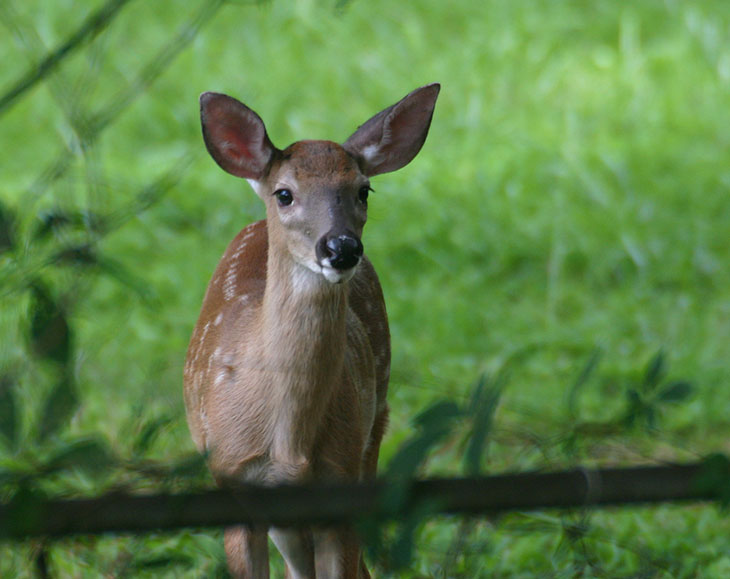




















































 Yeah, that’s probably nonsense, but I had to pass this one along. When preparing to shoot the illustrating image for the previous post, I was doing lighting and pose tests. Kaylee (the one in the back) will hold still and can even be convinced to look interested with the right approach – obviously not this one – while Little Girl (the pressure is on to switch her name to “Zoe” but I personally don’t think it fits) allows her curiosity to get the best of her and, even when she isn’t invited to be in the shot, has to come over to see what’s so fascinating. The resulting image was infused with ennui and existentialism and, though no slight is intended on our Gallic neighbors, just seemed so French. Of course it had to be monochrome.
Yeah, that’s probably nonsense, but I had to pass this one along. When preparing to shoot the illustrating image for the previous post, I was doing lighting and pose tests. Kaylee (the one in the back) will hold still and can even be convinced to look interested with the right approach – obviously not this one – while Little Girl (the pressure is on to switch her name to “Zoe” but I personally don’t think it fits) allows her curiosity to get the best of her and, even when she isn’t invited to be in the shot, has to come over to see what’s so fascinating. The resulting image was infused with ennui and existentialism and, though no slight is intended on our Gallic neighbors, just seemed so French. Of course it had to be monochrome.



 Anyway, the cocoons were an opportunity that I didn’t want to let slide, so I collected the leaf holding the saddleback caterpillar and put it in a jar on my desk to observe, with the intention of photographing the braconids emerging. A week went by with little to show, and the caterpillar didn’t change position at all, indicating that it was still alive only with some gentle rocking when disturbed. I was checking fairly frequently but, two days ago, spotted movement from the corner of my eye and found the jar full of tiny black insects, the size of small flying ants – just to let you know, the caterpillar measures 18mm in body length, add 15% for spikes, and the cocoons and wasps a mere 2.5mm. I went outside and removed the leaf, releasing the newly emerged wasps as I did so, and was pleased to see that some cocoons had yet to hatch, so I set up in a comfortable camera position and waited.
Anyway, the cocoons were an opportunity that I didn’t want to let slide, so I collected the leaf holding the saddleback caterpillar and put it in a jar on my desk to observe, with the intention of photographing the braconids emerging. A week went by with little to show, and the caterpillar didn’t change position at all, indicating that it was still alive only with some gentle rocking when disturbed. I was checking fairly frequently but, two days ago, spotted movement from the corner of my eye and found the jar full of tiny black insects, the size of small flying ants – just to let you know, the caterpillar measures 18mm in body length, add 15% for spikes, and the cocoons and wasps a mere 2.5mm. I went outside and removed the leaf, releasing the newly emerged wasps as I did so, and was pleased to see that some cocoons had yet to hatch, so I set up in a comfortable camera position and waited.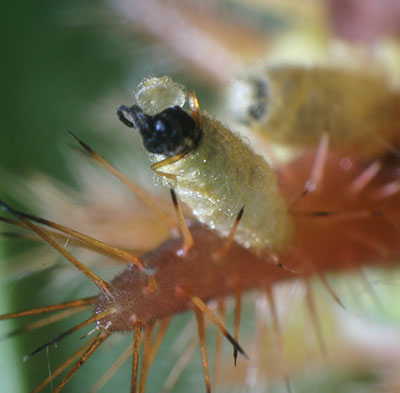 I missed prime focus on this one, but you can see the two forelegs have gotten free and are applying some leverage. It’s three minutes and forty seconds between the image above and this one – anyone choosing to show the event would be more inclined to use time-lapse imagery rather than video. Not that that would have worked, since the host caterpillar was responding to the movement or irritation and was rocking again, making my attempts to hold focus even more challenging than normal.
I missed prime focus on this one, but you can see the two forelegs have gotten free and are applying some leverage. It’s three minutes and forty seconds between the image above and this one – anyone choosing to show the event would be more inclined to use time-lapse imagery rather than video. Not that that would have worked, since the host caterpillar was responding to the movement or irritation and was rocking again, making my attempts to hold focus even more challenging than normal.

 By the time I returned, of course, two more had hatched, so I released them and took up my post with the one remaining cocoon. By evening, I was pretty sure I was seeing movement caused from within the cocoon, and stayed put, practically going blind from watching. This may sound overly dramatic, but there’s a kernel of truth to it, a curious trait of our eyes that I’ve encountered a few times now. The retina requires constantly changing input to work properly; if it keeps receiving the same image, somehow its function fades and it actually stops registering anything at all, getting bored I guess. There’s evidence that micro-twitching of the eye, call
By the time I returned, of course, two more had hatched, so I released them and took up my post with the one remaining cocoon. By evening, I was pretty sure I was seeing movement caused from within the cocoon, and stayed put, practically going blind from watching. This may sound overly dramatic, but there’s a kernel of truth to it, a curious trait of our eyes that I’ve encountered a few times now. The retina requires constantly changing input to work properly; if it keeps receiving the same image, somehow its function fades and it actually stops registering anything at all, getting bored I guess. There’s evidence that micro-twitching of the eye, call 
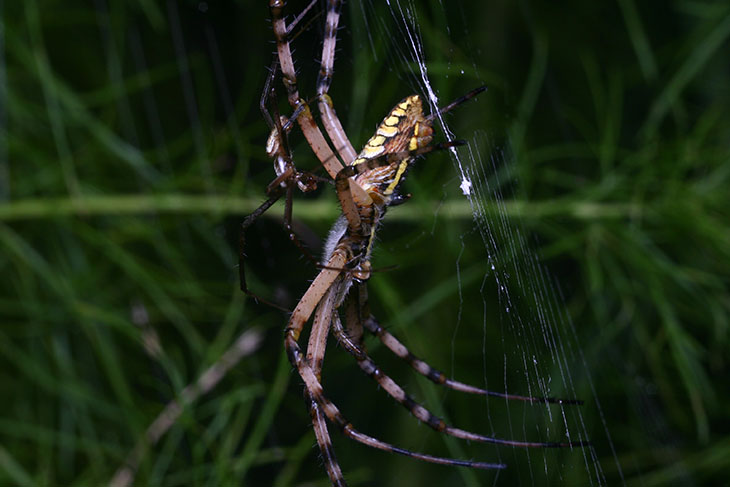

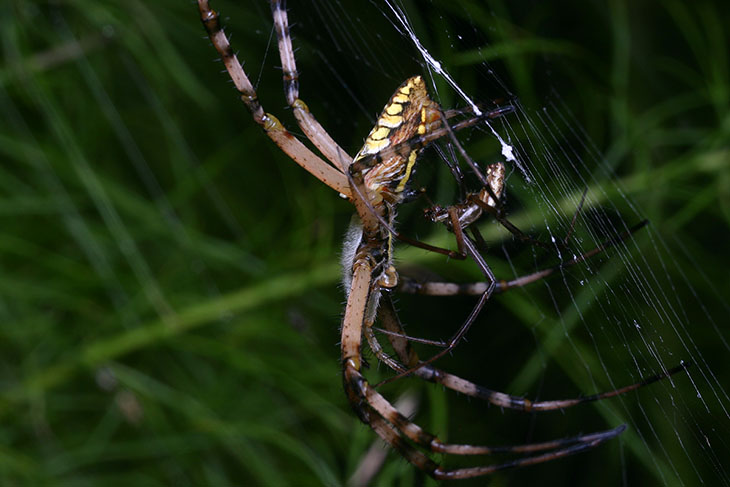
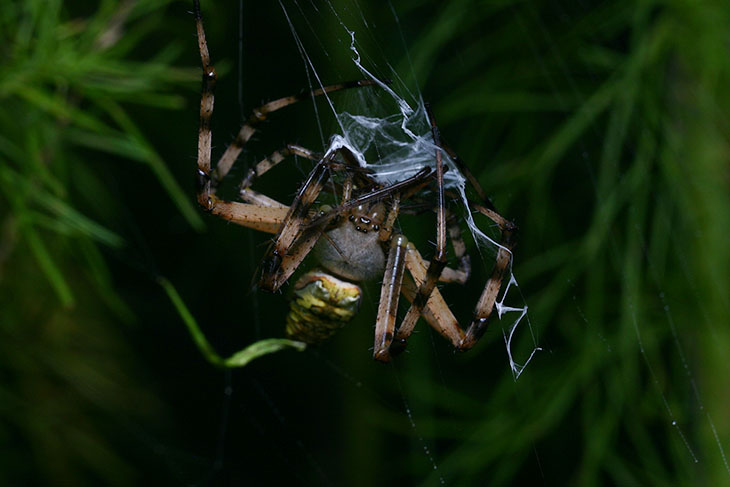

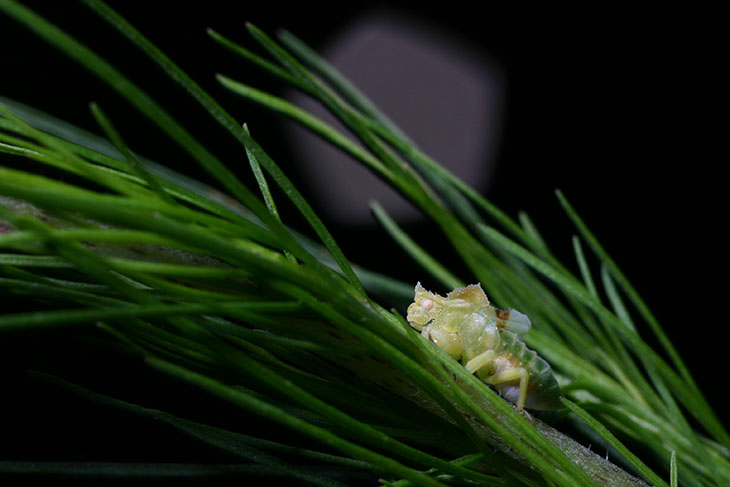

 The color development of the subject in my earlier post has continued apace, as demonstrated by another image from this evening. The dew has appeared without subtlety, even forming on the insect’s compound eyes; while I always imagine this is very annoying, few arthropods that I’ve observed ever seem to care. Of course, this could be because their body temperature has dropped significantly, not the least because of the dew itself, and they won’t be actively hunting or even moving much in these conditions. Not, as I said, that they did anyway, but even just lying in wait (yes, that’s what they look like lying down – what, you think they curl up on their sides?) for oblivious prey to happen along is probably pointless when the prey is just as likely to be in torpor from the temperatures too. The dew on the eyes might be akin to times when you’re a bit chilly, but way too tired to get up and put another blanket on the bed. Or maybe they just think the effect is groovy…
The color development of the subject in my earlier post has continued apace, as demonstrated by another image from this evening. The dew has appeared without subtlety, even forming on the insect’s compound eyes; while I always imagine this is very annoying, few arthropods that I’ve observed ever seem to care. Of course, this could be because their body temperature has dropped significantly, not the least because of the dew itself, and they won’t be actively hunting or even moving much in these conditions. Not, as I said, that they did anyway, but even just lying in wait (yes, that’s what they look like lying down – what, you think they curl up on their sides?) for oblivious prey to happen along is probably pointless when the prey is just as likely to be in torpor from the temperatures too. The dew on the eyes might be akin to times when you’re a bit chilly, but way too tired to get up and put another blanket on the bed. Or maybe they just think the effect is groovy…
